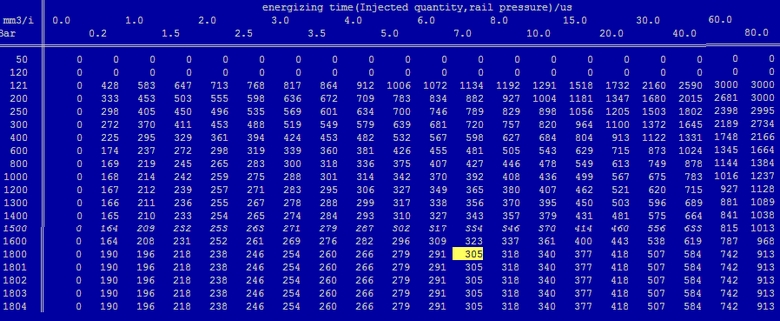How does the control unit work

Engines of modern cars today are all controlled by microprocessors. This is the beginning of approximately 90 years. For gasoline engines, carburetors replacing one-point injectors (EPI), then multipoint (MPI) and finally came direct fuel injected engines with injectors directly in the combustion chamber (GDI, FSI). The control unit initially managed only the amount of fuel, later acceded to the management of preignition. Automotive control units admit to more efficient use of fuel, resulting in the increase in power, reduction in gas consumptioén and improved emissions. There were added catalysts and exhaust gas recirculation systems - EGR. In recent years, the supercharging era increasingly being normalized with gasoline engines.
For diesel cars, rotary pumps operated by cable was replaced by rotary pump with electronic control - TDI engines. In these engines, the fuel nozzle is opened by pressure. Later (1997)there came to an engine a common-rail system, with high pressure pump, which creates a high pressure of fuel that drives to the common rail (therefor common-rail name), From common rail the pressured fuel is driven to each injector. Injectors are opened either by solenoid or by piezo. This fuel is metered independently of position of the pump shaft. All modern diesel engines are equipped with a turbocharger, which gives them a good position to modify the software.
The ECU is a kind of engine central brain. All information about its work are collected and parameters adjusted to pursue the driver commands. To the controller action it is absolutely necessary to supply electricity and connection to some sensors. The essential, without which no engine will work, include: gas sensor position / by some cars throttle position sensor / , crank position sensor, the amount of aspirated air / air weight, some just vacuum suction /. The sensors, which define and optimize the operation, include the following variables: the position of the cam / especially for engines with variable timing / water temperature, fuel temperature, fuel pressure, atmospheric pressure, intake air temperature, compressed air temperature, intake pressure for turbocharged engines, exhaust temperature, knocking, fault ignition sensor , oil temperature, oil pressure, vehicle speed, oxygen snesor in the exhaust.
The control unit processes the request from the driver's accelerator pedal and the engine also assign parameters to best meet the wishes of the driver. The control unit evaluates in what mode the engine will work. When the engine is hot and working in partial load, engine will operate in a closed loop, where the parameters are adapted to data from the oxygen sensor in the exhaust, which checks the amount of oxygen. Oxygen is lower when the fuel burned perfectly. We call it stoichiometric combustion. The gasoline engine appertains to 1 part of fuel 14.7 parts of air when burned perfectly. The diesel AFR (air/fuel ratio) is 17.1 parts of air to 1 part of fuel. The control unit processes all data according to a predefined algorithm. It is set up in that way to be able to calculate how much fuel or air will be taken to the engine and the exact time when to do so. It is being by power elements - injectors, valves, solenoid coils. The result is a properly working engine. Values, which control unit works with, are stored in so called "maps". The map is actually a table where the value of the axis y and x is assigned to a specific parameter. E.g. injection map length - X axis desired amount of fuel in mm3 and Y axis is the fuel pressure, the value in the table specifies how many microseconds should last injector opening, when the pressure was fixing injection of adequate doses.

There are many similar maps in control program, with the oldest units of tens, thousands at the latest.
Additional features include engine protection. For example, if engine overheats due to clogged radiator, or due to ride up the hill at full throttle, after exceeding some pre-defined values, the control unit intervenes and reduces engine power, or if there should ensue an immediate damage, shuts down the engine. Maps, that reduce power to protect engine, are called limiters. It is defined what value for what specific conditions will be reduced and by how much. For example: in the situation on dynamometer , the compressed turbo air cooled by intercooler isn´t sufficient and the control unit detects too high temperature in the intake manifold and hits the limiter, which reduces turbo pressure. . Less pressure = less air, than it is estimated by the unit. According to pre-defined air/fuel ratio ECU reducess fuel. The result is a performance decrease. Therefore, many times - if not adjusted or temporarily removed the limiter, it is not possible to measure the increased performance on dyno.
The third function of the control unit is a transmitting of information to diagnostic equipment. This is done through a data bus for older cars over K and L line and later through much faster bus type CAN-BUS. The control unit gives us error messages - values outside the acceptable range, and provides the specific data from the sensors. It also provides the output data sent by the executive members.
The control units are produced by various manufacturers such as. Bosch, Siemens, Marelli, Delphi, Denso etc. .. The Fiat and Alfa vehicles are mainly used Bosch units for older Euro 2 JTD is EDC15C2 (EDC = electronic diesel control) JTD E3 uses a EDC15c3 multijety EDC16C8 use a newer EDC16C39. 1.3JTD used Marelli unit. All these units are programmable via the OBD. Gasoline engines used Bosch and Marelli, is most reliably programmable via OBD and must be open and solder. Units for gasoline Bravo / Brava are also embedded in wax, or silicone, which protect possible interference with them.


